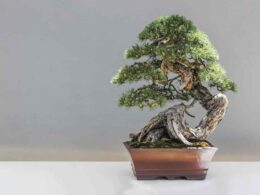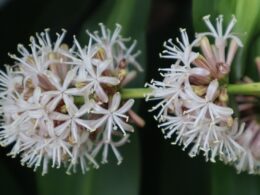Fern Plants Overview
Fern plants are a type of flora that reproduce via spores instead of seeds. They typically have long, thin leaves (called fronds) that grow in a variety of shapes and sizes. Although they are often associated with damp, shady environments, ferns can actually be found all over the world, in both hot and cold climates.
There are more than 15,000 different species of fern, making them one of the most diverse groups of plants on the planet. Ferns play an important role in many ecosystems, providing both food and shelter for a wide range of animals. In some cultures, ferns are also considered to be lucky symbols, bringers of good fortune.
Boston Fern Plant Care General Tips
The Boston fern is a popular houseplant that is known for its lush, draping fronds. Native to tropical regions, the Boston fern thrives in humid environments with bright, indirect light. When it comes to fern plant care, it is important to maintain high humidity levels and protect the plant from drafts. If the leaves begin to turn brown or crispy, it’s a sign that the plant is not getting enough moisture.
Boston ferns also benefit from regular misting and the occasional shower. Fertilizer should be applied monthly during the growing season. When repotting a Boston fern, be sure to use a pot with drainage holes and a light, well-drained potting mix.
Watering Ferns
Ferns thrive in moist soil, so it’s important to water them regularly, at least once a week, and more often in hot weather. The best way to water ferns is to use a watering can with a long spout, so that you can direct the water directly onto the soil instead of onto the fronds. Water the soil until it is evenly moist but not soggy, and then allow any excess water to drain away.
Fertilizer for Ferns
Fern plant care doesn’t require a lot of fertilizer, but they will benefit from a light feeding every month or so during the growing season (spring and summer). Use a diluted all-purpose fertilizer and apply it to the soil, taking care not to get any on the leaves.
Pruning Ferns
As ferns grow, they will often produce new fronds that are shorter and less vigorous than the older ones. These should be trimmed away so that the plant can put its energy into producing strong, healthy growth. You can also use pruning to shape your fern plant and control its size.
Common Problems With Ferns
If you’re growing ferns indoors, they should be quite hardy, but they can sometimes succumb to pests or diseases. The most common problem is root rot, which is caused by too much water or poor drainage. If you think your fern might have root rot, lift it out of its pot and check the roots. If they’re black or mushy, then it’s time to take action. The best way to treat root rot is to repot the fern into fresh, well-draining soil.
Are Ferns Toxic to Pets?
Ferns, though non-toxic to humans, may cause nausea or vomiting in pets if ingested in large amounts. Symptoms of fern poisoning in pets usually appear within a few hours of ingestion and may include diarrhea, excessive drooling, and a general feeling of illness. If you think your pet has eaten too much fern, contact your veterinarian immediately.
Health Benefits
Though they are often overlooked, ferns can have a significant impact on human health. For example, many species of fern are known to absorb harmful toxins from the air, including formaldehyde, ammonia, and benzene. This can help to improve indoor air quality and reduce the risk of respiratory problems. In addition, Boston ferns release moisture into the air, which can help to reduce dryness and ease symptoms of conditions like asthma and allergies.
As a result, these versatile plants can be an important part of creating a healthy environment. Whether used as houseplants or added to gardens, ferns offer a variety of benefits for human health.
Repotting an Indoor Fern Plant
If your fern plant is starting to look a bit cramped in its current pot, it may be time for a repot. But before you get started, there are a few things you need to know.
- First, choose a new pot that is only slightly larger than the old one, as ferns prefer to be slightly pot-bound.
- Second, use a well-draining potting mix specially formulated for ferns. You can find this at your local garden center.
- Third, water the plant thoroughly before repotting, as this will help to prevent root shock. When you’re ready to repot, carefully remove the plant from its old pot and loosen any tangled roots.
- Then, place the plant in the new pot and fill in around it with potting mix. Water well and give the plant a shady spot to recover.
With a bit of fern plant care, your tropical beauty will be back to its old self in no time!
Propagating Ferns
Our last tip on fern plant care is propagation. One common method is division. This involves carefully digging up the fern plant and dividing the root ball into two or more sections. Each section should have a good amount of roots and at least one healthy frond. The ferns can then be replanted in individual pots filled with moist potting mix.
Spores
Another propagation method is spores. Ferns reproduce via spores, which are tiny grains located on the underside of fronds. To collect spores, simply place a sheet of paper under a mature fern frond and gently rub its underside with a soft brush. The spores will adhere to the paper and can be stored in a dry, dark place until ready to use. To plant fern spores, simply sprinkle them on the surface of a pot filled with moist potting mix and keep the soil moist until the ferns emerge.
So, ready to get your humidifier and hanging basket, and start giving your Boston more tender fern plant care? Good luck!



















